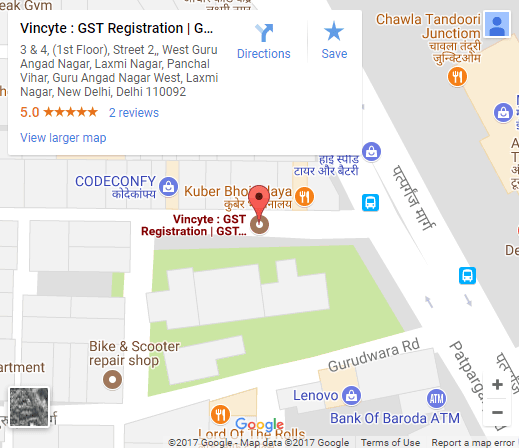
GST Litigation
The term “GST litigation” refers to legal disputes that arise between taxpayers and tax authorities regarding the Goods and Services Tax (GST). These disagreements can be related to various GST aspects, including registration, Classification of GST, input tax credit, valuation, tax rates, compliance requirements, refunds, penalties, discrepancies or mismatch in the returns or books of accounts and other related issues.
When a taxpayer receives the notice from the authorities like State GST, Central GST, Antivision or DGGI that a decision, assessment, or action made by the tax authorities is incorrect or unjust, they can start legal procedures to challenge or resolve the dispute. During the process of litigation, appeals or applications are submitted to the appropriate adjudicating authorities or courts, arguments and evidence are presented, hearings are attended, and a final decision is sought.
When a taxpayer believes that a decision, assessment, or action made by the tax authorities is incorrect or unjust, they can start legal procedures to challenge or resolve the dispute. During the process of litigation, appeals or applications are submitted to the appropriate adjudicating authorities or courts, arguments and evidence are presented, hearings are attended, and a final decision is sought.
Objective of GST Litigation
The objective of GST litigation is to resolve disputes and conflicts to disagreements between taxpayers and tax authorities regarding Goods and Services Tax (GST) matters. The objective of GST Litigation include:-
- Interpretation of GST Laws: The provisions of the GST laws, rules, and regulations can be better understood and interpreted to help with GST litigation. It enables the courts and adjudicating authorities to provide their interpretations and establish precedents that can serve as a guide for decisions pertaining to the GST in the future.
- Dispute Resolution: One of the main objectives of GST litigation is to resolve conflicts and disagreements between the taxpayer and tax authorities. It enables a platform for taxpayers to challenge decisions, assessments, or action taken by the tax authority.
- Protection of taxpayer rights: The objective of GST litigation is to protect taxpayers’ rights and interests. It gives them a legal way to challenge any adverse or incorrect decisions made by the tax authorities and seek a resolution that aligns with how they interpret the GST laws.
- Precedence and Consistency: GST litigation ensures consistency in the interpretation and application of GST laws by established precedents. The decisions rendered by higher authorities, including courts, the GST Appellate Tribunal (GSTAT), and appellate authorities, can guide future cases and clarify the legal principles regulating GST.
- Legal certainty and compliance: Through GST litigation, the legitimate standards and translations of GST regulations become more clear, providing taxpayers with a more prominent comprehension of their rights and obligations. This clarity promotes compliance and helps taxpayers to make informed decisions while complying with GST laws through their business operations.
GST Litigation Process
Taxpayers and tax authorities go through several stages and procedures in the Goods and Services Tax (GST) litigation process to settle disagreements. Here is GST Litigation process:-
Dispute at the Tax Authority Level:
- Tax Notice: Tax Authority issues a notice to the taxpayer regarding disagreement or dispute under GST.
- Response: Then the taxpayer needs to submit a response to the notice, providing their arguments and evidence with supporting documents.
- Adjudication: The Taxpayer Authority reviews the response and its supporting documents and will come to a decision, which can be an assessment, penalty imposition, or any other relevant action.
Appeal at the Appellate Authority Level:
- Filing of Appeal: If the taxpayer disagrees with the decision given by tax authority, they can go for an appeal within a specified time period.
- Appellate Authority Review: Then the appellate authority will review the appeal with arguments, evidence, and documents submitted by the taxpayer and the tax authority.
- Hearing: The Appellate authority may conduct hearing to allow taxpayer and tax authority to present their appeal for better clarification.
- Decision: The appellate authority will deliver a decision, which can either uphold, modify, or reverse.
Further Appeal at the GST Appellate Tribunal (GSTAT):
- Filing the Appeal: Taxpayer and Tax Authority can file an appeal with the GSTAT, if they are dissatisfied with the decision of Appellate Authority.
- GSTAT Review: The GSTAT will review the appeal with arguments, evidence, and records submitted by the taxpayer and appellant.
- Hearing: The GSTAT may conduct hearings to allow both the parties to present their appeal, give respective evidence and argue their positions.
- Decision: The GSTAT will deliver a decision, which may confirm, modify, or reverse the decision of the appellate authority.
Further Legal Recourse:
- High Court and Supreme Court: If either party is dissatisfied with the GSTAT’s decision or if there are substantial legal issues in the case, they can appeal to the respective High Court and then the Supreme Court.
Get In Touch

Contact Us
New Business

